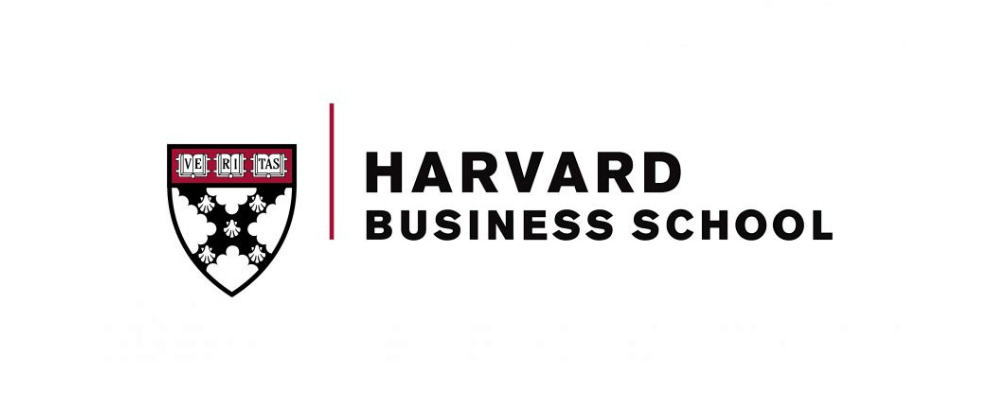
The days of sticking with one job through retirement are long gone. Younger workers are prioritizing happiness over workplace loyalty, often out of necessity.
Harvard Business School senior lecturer Christina Wallace offers a roadmap for this rebalance in her new book, The Portfolio Life: How to Future-Proof Your Career, Avoid Burnout, and Build a Life Bigger than Your Business Card, which explains how to treat work-life calibration as you would a financial portfolio, through concepts like diversification.
“There’s a calculus of: If I’m never going to get that stability, then I’m going to do what I can to be happy now.”
Wallace was inspired to write the book—a mix of case study, research, and memoir—by witnessing the mindset shift among her millennial peers, who came of age during a recession, pandemic-related instability, and skyrocketing college, housing, and childcare costs. Instead of staying the course, this generation is increasingly looking to seize happiness wherever they can, because nothing is guaranteed.
“Millennials are saying: Hold up. The rug keeps getting pulled out from under us. We think we’re finally going to accrue some wealth, finally own a home, pay off student loans, and afford a kid or two. But then there’s another disruption.” Wallace explains. “There’s a calculus of: If I’m never going to get that stability, then I’m going to do what I can to be happy now.”
Wallace believes that more people are waking up to the knowledge that “no amount of hustle and grit is going to overcome structural inequality and the lack of growth in real wages. Each of these pieces has made stability harder to achieve individually and collectively.”
One of the more telling indicators of the shift in how employees think about their work shows up in US Bureau of Labor statistics. Workers between the ages of 55 and 64 remain with an employer for a median 9.9 years, compared with 2.8 years for 25-to-34-year-olds. Over 90 percent of millennials (people born in the 1980s and 1990s) say they expect to change jobs every three years, the book says.
Now, Wallace offers a framework for managers (and aspiring managers) to work in a more balanced, self-fulfilling way in this changing landscape, based on three core tenets.
You’re more than your job
This is the era of reinvention. Wallace warns against defining oneself by a job, even if you’ve been there a while or consider it part of your personal brand. The more you’re wedded to one position, the harder it will be to find a new one if layoffs happen.
“Older generations are going to feel this most acutely: Equating your identity with your occupation is problematic, because companies are not rewarding loyalty with tenure. We’re seeing layoffs across the board, and senior employees aren’t protected from these headwinds,” she says. “When your identity is your job, it’s going to be harder for you to see your options. You won’t have as much flexibility to go in a different direction and reposition your skills.”
“If you recognize that individuals are greater than the sum of their previous experiences, then you can think more broadly about competencies, rather than just credentials, as you’re slotting someone into their next role. ”
There’s also a troubling external factor when you pin your identity on one job: People will pigeonhole you. “The longer you equate your identity with your occupation, the more that’s how the market will see you as well,” she says.
This is important for managers, too, who might get into hiring ruts and have a myopic focus on job qualifications. Think creatively instead. Stay open-minded to new candidates and skills.
“If you recognize that individuals are greater than the sum of their previous experiences, then you can think more broadly about competencies, rather than just credentials, as you’re slotting someone into their next role. This gives managers a flexibility to bring in a fresh perspective, or maybe consider a diagonal fit for a new hire rather than a linear one,” she says.
Diversification is key
Just as you wouldn’t dump all your money into one stock, you shouldn’t invest all your hopes, dreams, and ambitions into one company.
“This means having a multiplicity of skills, networks, industries, and irons in the fire—and that might also mean multiple income streams,” Wallace says.
From a managerial point of view, diversification means being open to reallocating talent when there are disruptions, such as new technology or a new competitor. Managers need to be nimble.
“For example, if you’re a white-collar, professional-services company, generative AI is knocking at the doorstep of your business model right now,” Wallace says. “If you can only keep people in the roles they’ve been in, you won’t have a ton of flexibility. Instead, you should be thinking about stretch assignments and rotations. Allow folks to try new things that interest them, separate from their main responsibilities. Then you’ll have both the employee buy-in and the process already in place to think flexibly about talent reallocation when you experience a major shake-up.”
Rebalance early and often
A good portfolio has a balance of stocks and bonds, based on your current financial picture. The same is true at work: Everyone has different needs at different times, and that’s important to acknowledge. At some stages, you might yearn to work less due to family obligations. At other times, you can take on a more high-stress role. Careers can be fluid, just like life.
“It’s not a linear progression,” Wallace says. “I recently went through a chapter of my life when I had my first child and then my second shortly thereafter. I needed a very different allocation of my portfolio in order to have flexibility, autonomy, income stability, and good health insurance, and I recognized this chapter is merely that: a chapter. I will reallocate again when I’m in a different place.”
“We need to allow highly ambitious professionals to have chapters of life that require reallocation of their time, talents, and ambitions. ”
She urges workers to embrace the start of a new chapter—being attuned to feeling stressed or overly stretched—instead of resisting it due to wanting to appear unflappable. From a supervisory perspective, empowering and expecting excellent workers to take breaks and to reallocate their time will keep a talent pipeline filled, instead of forcing good employees out of the work force entirely.
“We need to allow highly ambitious professionals to have chapters of life that require reallocation of their time, talents, and ambitions. And when those chapters end, we need to give them permission to return to that highly ambitious state, and not penalize people for having children or needing a sabbatical or managing elder care,” Wallace says.
To that end, she says it’s all right to have a “good enough” job that isn’t all-consuming, and this is something that even hard-charging managers should recognize.
“A job can be just one way you meet your needs,” she says. “And I hope what managers will recognize is that it actually increases job satisfaction and the stability of your employee base if you embrace this notion that employees can have other things outside of work, whether it’s family responsibilities, hobbies, or side-income streams, and yet still do great work.”
Managers: Lead and the rest will follow
Managers should model all three of these tenets for employees. “Be the change you want to see. Showcase who you are outside of the office and what else matters, whether that’s a three-week fly-fishing trip or being present for your kids’ games or recitals,” Wallace says. “Start asking about those other elements of your team’s lives, or their ‘portfolios.’ Make it really explicit: ‘What else is in your portfolio? How can I help you get there?’”
Wallace realizes that this might be a seismic shift in perspective for people who prefer loyalty and stability, and who might feel unsettled by today’s workplace fluidity. But just as wise investors know how to ride out stock market turbulence, resilient workers can cope with disruption by investing in themselves first.
“What’s incredibly freeing about this state of constant disruption is that we’re given the space to grow, to reinvent ourselves to meet life as it shows up rather than having to forecast at 18, or 22, or even 30, who you’re going to be at 70,” she says. “As volatile as this can feel, there’s also an amount of agency and growth that I think is really freeing.”
“Harvard Business School is the graduate business school of Harvard University, a private research university in Boston, Massachusetts. It is consistently ranked among the top business schools in the world and offers a large full-time MBA program, management-related doctoral programs, and executive education programs.”
Please visit the firm link to site




